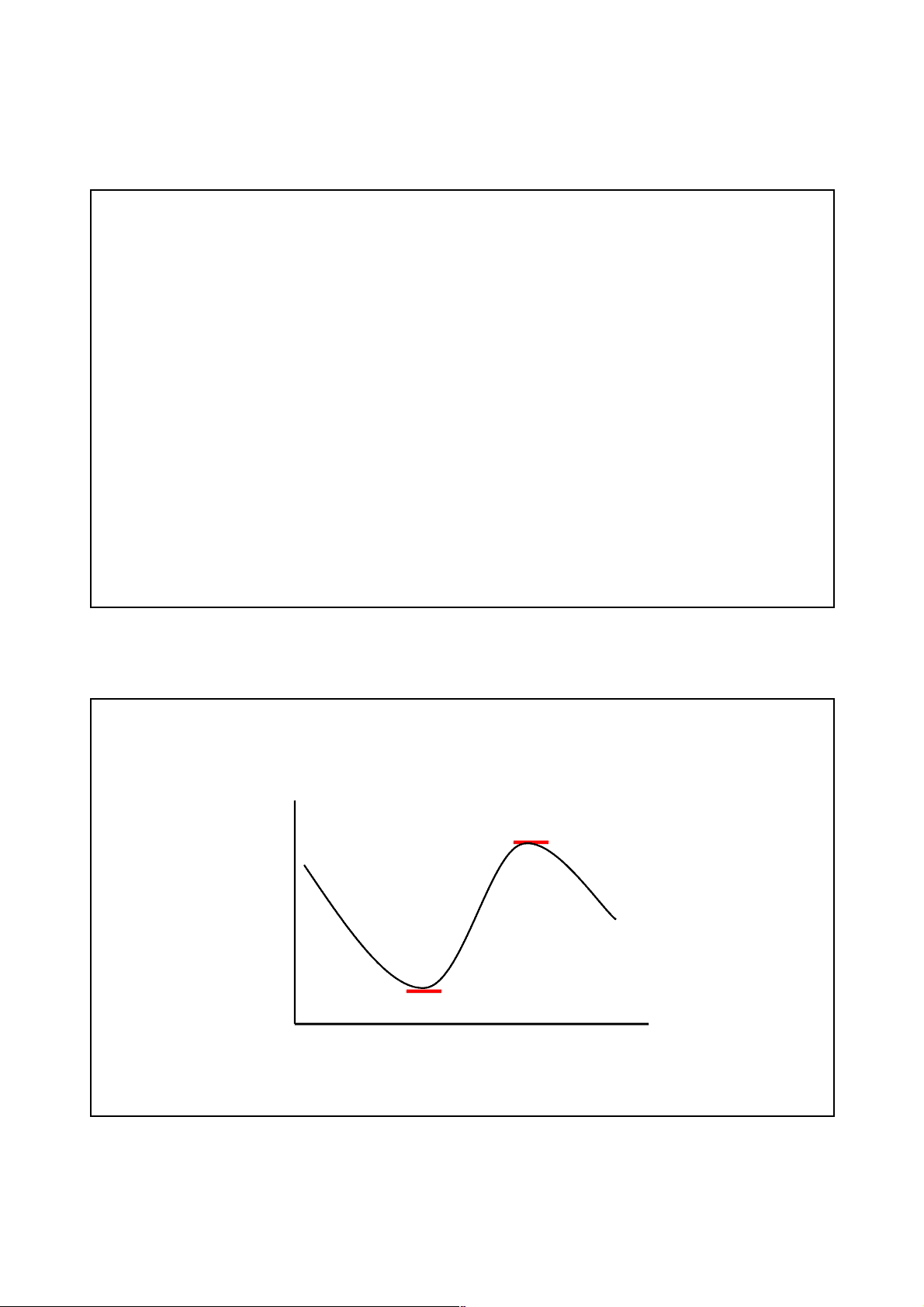
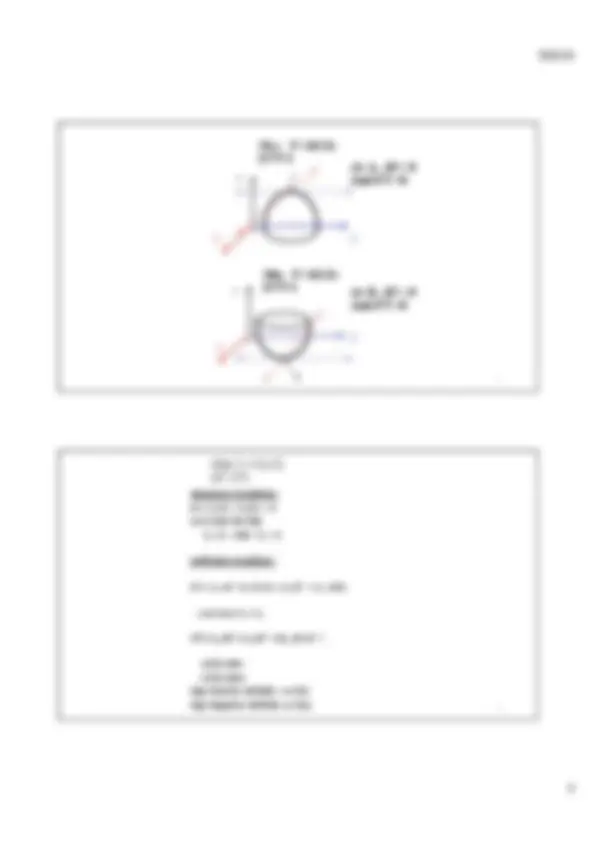
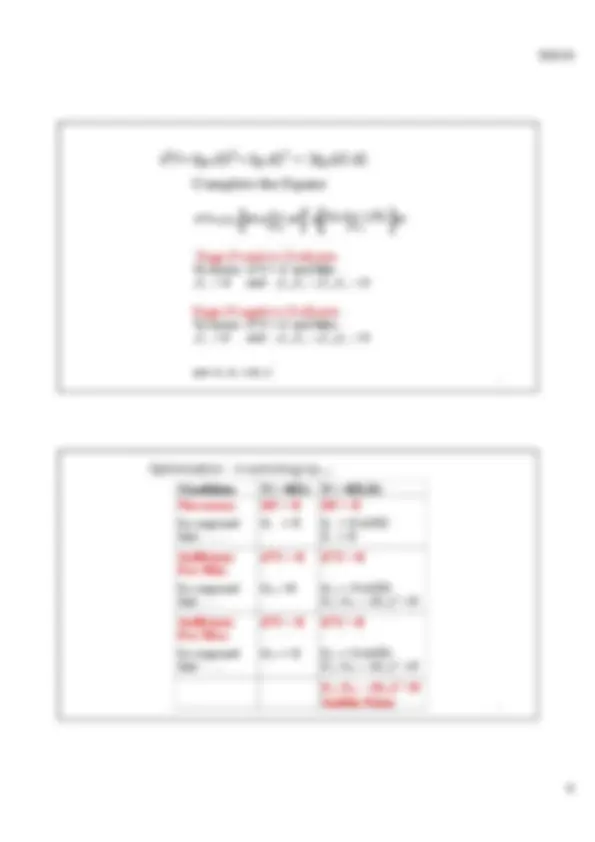
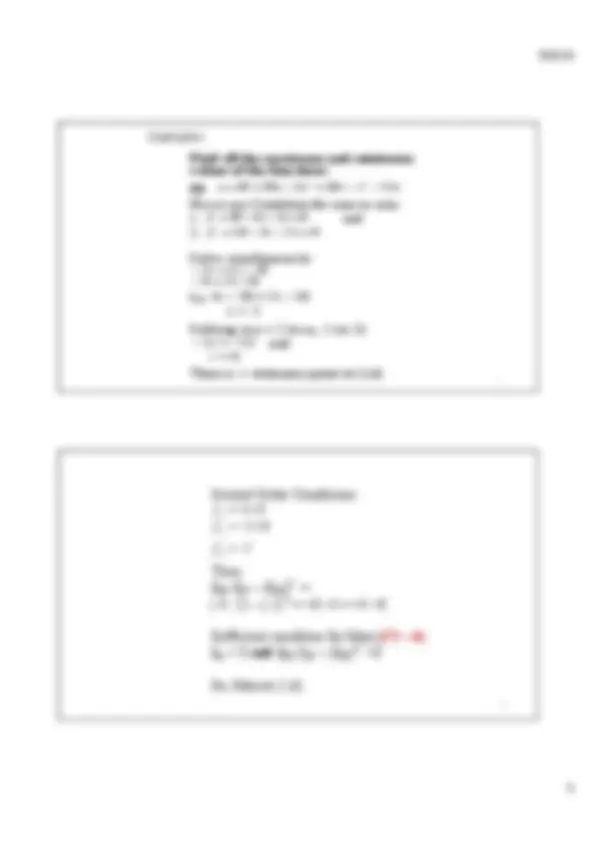
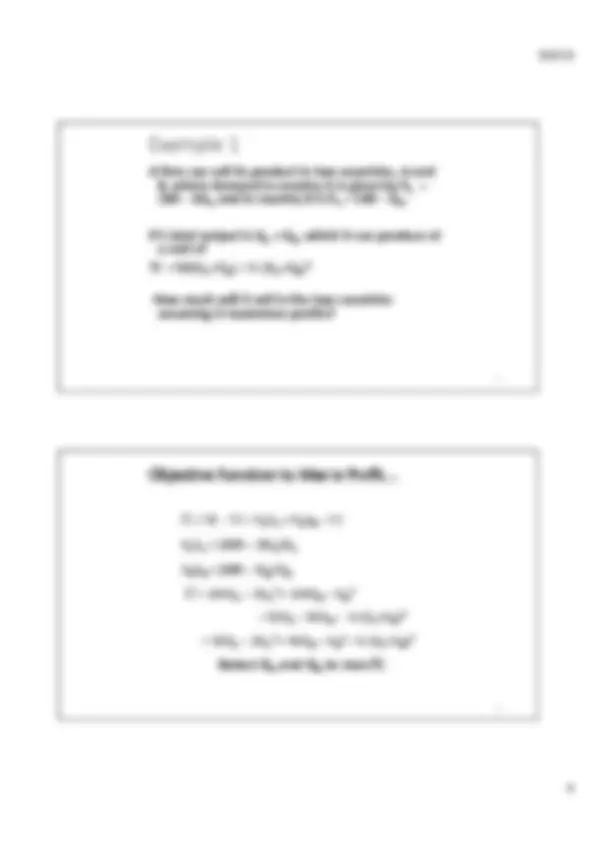
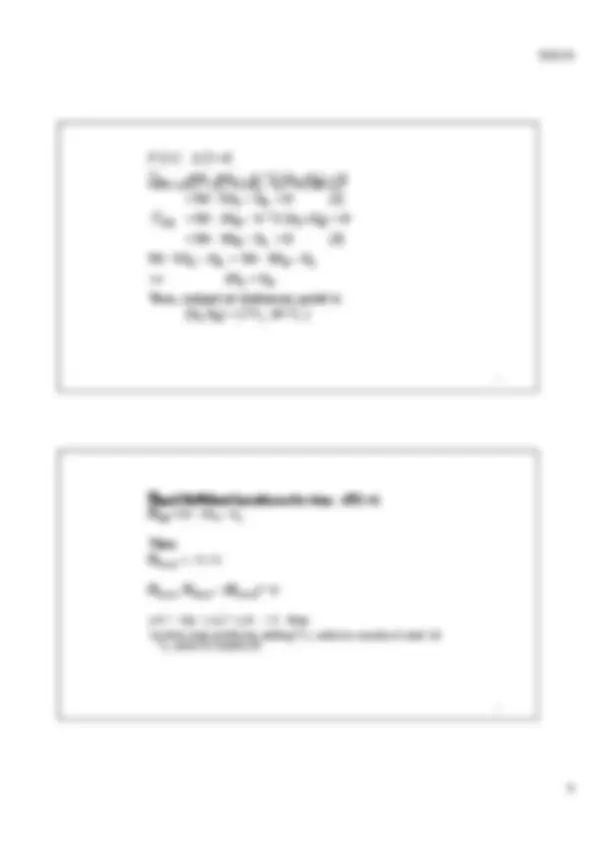
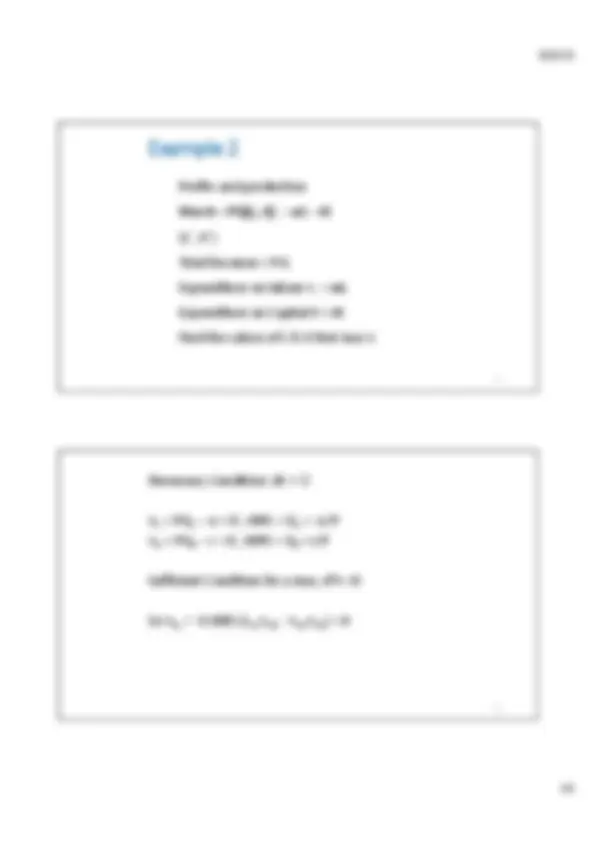


Study with the several resources on Docsity

Earn points by helping other students or get them with a premium plan


Prepare for your exams
Study with the several resources on Docsity

Earn points to download
Earn points by helping other students or get them with a premium plan
Community
Ask the community for help and clear up your study doubts
Discover the best universities in your country according to Docsity users
Free resources
Download our free guides on studying techniques, anxiety management strategies, and thesis advice from Docsity tutors
Optimisation of functions of several variables Unconstrained Optimisation
Typology: Slides
1 / 12

This page cannot be seen from the preview
Don't miss anything!







1
Unconstrained Optimisation 2
Max Min X Y
3 First-Order / Necessary Condition:
Second-Order / Sufficent Condition:
2
2
Max Y = f (X) X* 4
X* Necessary Condition: dY = f ¢ (X).dX = 0 , so it must be that f ¢(X)= 0 Sufficent Condition: d^2 Y = f ¢¢ (X).dX^2 >0 for Min <0 for Max For Positive Definite, (Min ), it must be that f ¢¢ > 0 Negative Definite, (Max), it must be that f ¢¢ < 0
7 d 2 Y= fXX.dX 2
fXX fZZ – (fXZ) 2 < Saddle Point
9 Examples Find all the maximum and minimum values of the functions: (i) y^^10 20 x^2 x^16 z z^2 xz = + -^2 + -^2 - Necessary Condition for max or min:
So, Max at (2,6)
13
(iii) z z y x^ x 2 5 2 20 2 2 = - + - Necessary Condition for max or min:
15
A firm can sell its product in two countries, A and B, where demand in country A is given by PA = 100 – 2QA and in country B is PB = 100 – QB. It’s total output is QA + QB, which it can produce at a cost of TC = 50(QA+QB) + ½ (QA+QB)^2 How much will it sell in the two countries assuming it maximises profits? 16
P = TR - TC = PAQA + PBQB – TC PAQA = ( 100 – 2 QA)QA PBQB = ( 100 – QB) QB P = 100 QA – 2 QA^2 + 100 QB – QB^2
19
Profits and production Max p = PQ(L, K) – wL - rK {L, K} Total Revenue = PQ Expenditure on labour L = wL Expenditure on Capital K = rK Find the values of L & K that max p 20 Necessary Condition: dp = 0 pL = PQL – w = 0 , MPL = QL = w/P pK = PQK – r = 0 , MPK = QK = r/P Sufficient Condition for a max, d^2 p < So pLL < 0 AND (pLL.pKK - pLK.pKL) > 0
21 Max p = 2 K1/3L1/2^ – L – 1/3 K {L, K}
(1) pL = K1/3L-1/2^ – 1 = 0 (2) pK = 2 / 3 K-2/3^ L1/2^ – 1 / 3 = 0 Stationary point at [L, K] = [4, 8] note: to solve, from eq1: L½^ = K1/3^. Substituting into eq2 then, (^2) / 3 K– 2/3K1/3 (^) = 1 / 3. Re-arranging K– 1/3 (^) = ½ and so K 1/3 (^) = 2 = L½. Thus, K* =2^3 = 8. And so L* = 2^2 = 4. NOW, let Q = K1/3L1/2, P = 2, w = 1, r =1/ Find the values of L & K that max p? 22 pL = K1/3L-1/2^ – 1 pK = 2 / 3 K-2/3^ L1/2^ – 1 / 3 pLL = -^1 / 2 K1/3L-3/2^ < 0 for all K and L pKK = – 4 / 9 K–5/3L½ pKL = pLK = 1 / 3 K–2/3L-½ For sufficient condition for a max, Check d^2 p <0; p LL < 0 & ( p LL. p KK - p LK. p KL)>